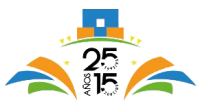| ABSTRACT |
Worldwide, more than one billion people suffer from poor vision because they do not have the eyeglasses they need. Their uncorrected refractive errors are a major cause of global disability and drastically reduce productivity, educational opportunities, and overall quality of life. The problem persists most prevalently in low-resource settings, even though prescription eyeglasses serve as a simple, effective, and largely affordable solution. In this review, we discuss barriers to obtaining, and approaches for providing, refractive eye care. We also highlight emerging technologies that are being developed to increase the accessibility of eye care. Finally, we describe opportunities that exist for engineers to develop new solutions to positively impact the diagnosis and treatment of correctable refractive errors in low-resource settings. |




